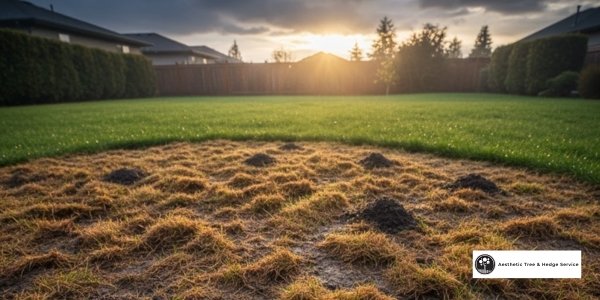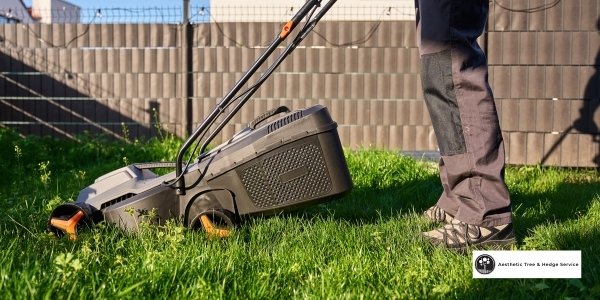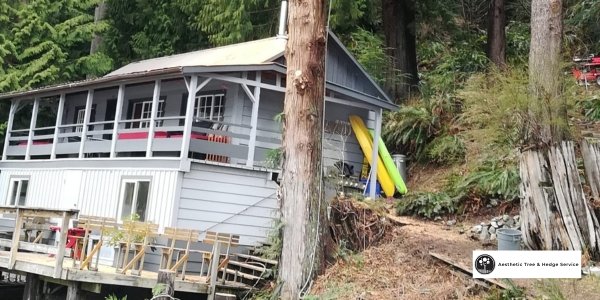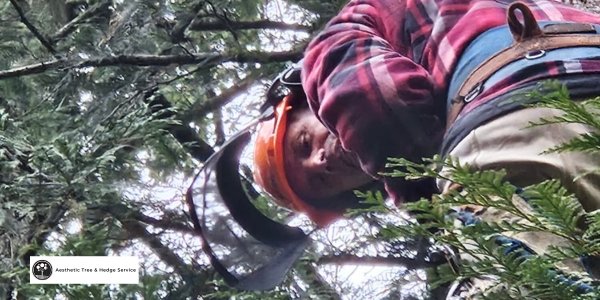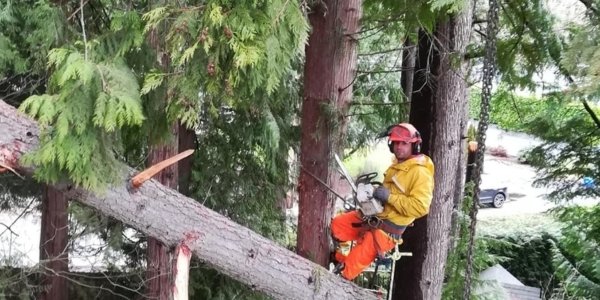As the threat of wildfires increases in many regions, homeowners and property managers are seeking ways to protect their trees and property from potential damage. Wildfire threats can devastate landscapes, cause significant damage to homes, and disrupt ecosystems. While no area is completely immune to the risk of wildfire, there are proactive steps you can take to minimize the danger and safeguard your property.
In this blog, we’ll explore how to keep your trees and property safe from wildfire threats, including key fire-resistant landscaping techniques, ways to maintain healthy trees, and when to call an arborist for professional advice.
1. Understanding Wildfire Threats: How They Impact Trees and Properties
Wildfire threats are on the rise, particularly in areas that experience hot, dry conditions. Wildfires spread quickly and can cause irreversible damage to forests, residential areas, and commercial properties. Understanding how wildfires impact trees and landscapes is the first step in preventing damage.
- Tree vulnerability: Certain tree species are more susceptible to fire than others. Pine, fir, and eucalyptus trees contain flammable oils that make them more likely to ignite during a fire. Trees with dense canopies and dry, dead wood also pose higher fire risks.
- Property damage: Wildfires can scorch the landscape, destroy homes, and burn down entire forests. When trees on your property catch fire, the risk to nearby structures, gardens, and other natural elements increases exponentially.
- Fire behavior: Fires thrive on three components—fuel, oxygen, and heat. Dry vegetation, dead branches, and underbrush serve as fuel, while hot weather and wind help fires spread. Once a fire starts, it can quickly travel across landscapes, putting homes and trees in its path at risk.
To mitigate these wildfire threats, it’s essential to implement fire-prevention techniques that reduce the potential fuel load on your property and create defensible space around trees and structures.
2. Creating Defensible Space to Protect Against Wildfire Threats
One of the most effective ways to shield your trees and property from wildfire threats is by creating defensible space. This is a buffer zone between buildings and trees that reduces the likelihood of fire spreading to homes or other structures.
- Zone 1: Immediate Zone (0 to 1.5 meters from the house): Keep this area clear of anything flammable. Remove dead plants, dry leaves, and other debris, and avoid planting any trees or shrubs close to the home. Maintaining a clean, debris-free environment is key to preventing fire from reaching structures.
- Zone 2: Intermediate Zone (1.5 to 9 meters from the house): In this zone, focus on keeping trees well-pruned and spaced apart. Remove lower branches and thin tree canopies to prevent fire from climbing up into the crowns. Additionally, use fire-resistant plants and trees that are less likely to ignite, such as maple, oak, and birch.
- Zone 3: Extended Zone (9 to 30 meters from the house): In this outer zone, reduce the density of trees and shrubs. This area should have minimal vegetation that could act as fuel for a wildfire. Remove dead branches, create firebreaks, and use gravel or hardscaping to prevent the spread of fire.
By establishing defensible space, you create a buffer that not only protects your trees from wildfires but also minimizes the risk of flames reaching your home. Regular maintenance is required to keep these zones effective over time.
3. Choosing Fire-Resistant Trees and Plants to Minimize Wildfire Threats
Selecting fire-resistant trees and plants is another important strategy in reducing wildfire threats to your property. While no plant is completely fireproof, some species are better at withstanding flames and embers than others. These plants can help slow down or even stop the spread of fire, providing an extra layer of protection.
- Fire-resistant trees: Deciduous trees, such as oaks, maples, and poplars, are generally more fire-resistant than conifers. These trees have higher moisture content in their leaves and are less likely to catch fire. Additionally, species like aspen and birch are good choices for fire-prone areas.
- Shrubs and groundcover: Fire-resistant shrubs and groundcover can be planted in the defensible space around your home. Plants like lavender, rockrose, and California lilac are less likely to ignite and can help create a natural fire barrier. Groundcover like ice plant or creeping thyme can also reduce the spread of flames.
- Avoid flammable species: Stay away from highly flammable trees like pine, juniper, and eucalyptus, as these species contain oils and resins that burn easily. Dense shrubs and tall grasses should also be avoided in fire-prone areas.
By incorporating fire-resistant species into your landscape, you can significantly reduce the risk of wildfire threats and create a safer environment for your property and trees.
4. Maintaining Healthy Trees to Combat Wildfire Threats
Keeping your trees healthy is a crucial part of defending your property against wildfire threats. Weak, damaged, or diseased trees are more likely to catch fire, as they often have dead wood and dry leaves that act as fuel for flames. Here are some key tips for maintaining healthy trees:
- Regular pruning: Prune trees to remove dead or damaged branches, and thin the canopy to reduce the chance of fire spreading through the upper branches. Lower branches should be pruned to prevent ground fires from climbing into the tree’s crown.
- Watering and mulching: Provide adequate water to trees, especially during dry seasons. Well-hydrated trees are less likely to become dry and brittle. Apply mulch around the base of trees to help retain moisture, but avoid using flammable mulch such as wood chips in fire-prone areas.
- Remove dead vegetation: Dead or dying trees should be removed immediately, as they pose a significant fire hazard. Regularly clear out any fallen leaves, pine needles, or dead branches from your property to minimize potential fuel for wildfires.
Healthy trees are more resilient to wildfire threats, and routine maintenance can go a long way in protecting both your trees and property.
5. When to Call an Arborist for Wildfire Risk Assessment and Prevention
While proactive measures can help minimize wildfire threats, there are times when it’s essential to consult with a professional arborist. Arborists are trained to assess the health of trees, identify fire hazards, and recommend strategies to reduce fire risk. Here’s when you should consider calling an arborist:
- Tree health concerns: If you have trees that appear weak, diseased, or damaged, an arborist can evaluate their condition and recommend pruning, treatment, or removal to reduce fire risk.
- High-risk species: If your property contains highly flammable tree species, such as pine or eucalyptus, an arborist can advise on how to manage these trees and suggest fire-resistant alternatives.
- Defensible space planning: If you’re unsure how to create defensible space around your home, an arborist can provide guidance on proper tree spacing, pruning, and plant selection to ensure maximum fire protection.
By partnering with a certified arborist, you can ensure that your trees remain healthy and your property is as fire-resistant as possible.
Safeguarding Your Trees and Property from Wildfire Threats
Wildfire threats are a serious concern for property owners in fire-prone regions, but with careful planning and proactive measures, you can protect your trees and landscape. By creating defensible space, selecting fire-resistant tree species, and maintaining healthy trees, you can reduce the risk of wildfires damaging your property.
If you’re concerned about wildfire risks on your property, don’t hesitate to reach out to Aesthetic Tree. Our certified arborists are experienced in wildfire risk assessment and can help you take the necessary steps to keep your trees and property safe. Contact us today for an evaluation!
